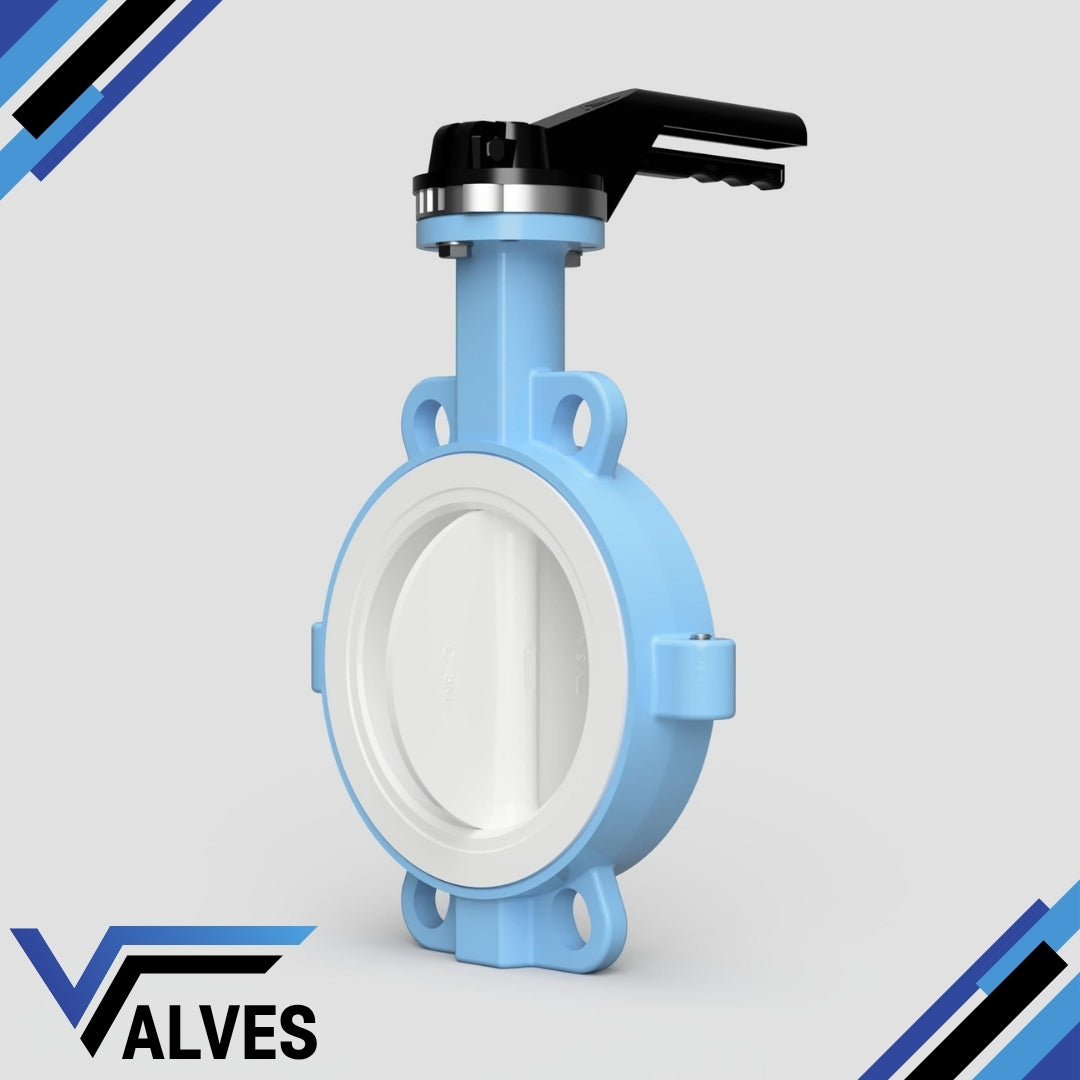Valves UK
TTV PTFE Lined Wafer Butterfly Valve
TTV PTFE Lined Wafer Butterfly Valve
Couldn't load pickup availability
The TTV PTFE Lined Butterfly Valve - PN16 is a high-performance valve designed for handling aggressive and corrosive fluids across various industrial applications. Engineered with precision, this valve features a robust PTFE (Polytetrafluoroethylene) lining that provides exceptional chemical resistance, ensuring long-term durability and reliable operation in demanding environments.
Key Features:
-
Superior Chemical Resistance: The PTFE lining offers excellent resistance to a wide range of chemicals, making this valve ideal for applications involving corrosive fluids, acids, and alkalis.
-
High-Quality Construction: Built to PN16 pressure rating standards, the valve is designed to withstand pressures up to 16 bar, ensuring reliable performance in both high-pressure and high-temperature environments.
-
Low Torque Operation: The advanced design of the TTV Butterfly Valve ensures low operating torque, which reduces wear and tear on the valve components, extending its service life and reducing maintenance costs.
-
Leak-Proof Seal: The PTFE lining provides a perfect seal, preventing any leakage and ensuring the integrity of the fluid flow. This is crucial in applications where contamination or fluid loss must be avoided.
-
Versatile Application: This butterfly valve is suitable for a wide range of industries, including chemical processing, pharmaceuticals, food and beverage, water treatment, and more.
-
Compact and Lightweight Design: The TTV PTFE Lined Butterfly Valve offers a compact, space-saving design, making it easy to install in systems where space is limited.
-
Easy Maintenance: The valve's design allows for easy disassembly and reassembly, simplifying maintenance procedures and minimising downtime.
Applications:
-
Chemical Industry: Ideal for controlling the flow of aggressive chemicals, acids, and solvents.
-
Pharmaceuticals: Ensures safe and contaminant-free fluid control in pharmaceutical manufacturing processes.
-
Food and Beverage: Suitable for handling various food-grade chemicals and fluids, maintaining hygiene standards.
-
Water Treatment: Used in water treatment plants for controlling the flow of treated water and chemicals.
Specifications:
- Size Range: DN50 to DN1200
- Pressure Rating: PN10, PN16, ANSI 150
- Lining Material: PTFE (Polytetrafluoroethylene)
- Body Material: Ductile Iron
- Disc Material: PTFE coated
- Connection Type: Wafer
The TTV PTFE Lined Butterfly Valve - PN16 is the perfect choice for industries requiring robust, reliable, and chemically resistant valves. Its superior design and construction ensure long-lasting performance and safety, making it an essential component in your industrial fluid control system.
Share

FAQ's
What is the difference between a valve and an actuator?
What types of actuators are available?
The main types of actuators are:
Pneumatic actuators – use compressed air for fast, reliable operation.
Electric actuators – use electrical power for precise control.
Hydraulic actuators – use fluid pressure for high-torque applications.
Each type offers unique advantages depending on the environment, media, and system control needs.
How do I choose the right actuator for my valve?
To select the correct actuator, consider:
Valve type and torque requirement
Power source available (air, electric, or hydraulic)
Operating environment (temperature, humidity, hazardous area)
Control signal type (on/off or modulating)
Matching actuator torque and compatibility with the valve’s ISO mounting ensures reliable performance.
What are the main types of valves used in automation?
The most common valves in automated systems include:
Ball valves – for tight shutoff and quick operation.
Butterfly valves – for larger flow control with compact design.
Globe valves – for precise throttling and flow regulation.
Check valves – to prevent backflow.
Gate valves – for full bore flow isolation.
What’s the difference between a double-acting and spring-return actuator?
Double-acting actuators use air (or power) to both open and close the valve.
Spring-return actuators use air to open (or close) the valve, and a built-in spring to automatically return it to a safe position when power or air is lost — ideal for fail-safe operation.
How often should valves and actuators be serviced?
Regular maintenance intervals depend on operating conditions, but a good rule of thumb is to inspect every 6–12 months.
This includes checking for leaks, lubrication, seal wear, and actuator responsiveness to prevent unexpected downtime.

